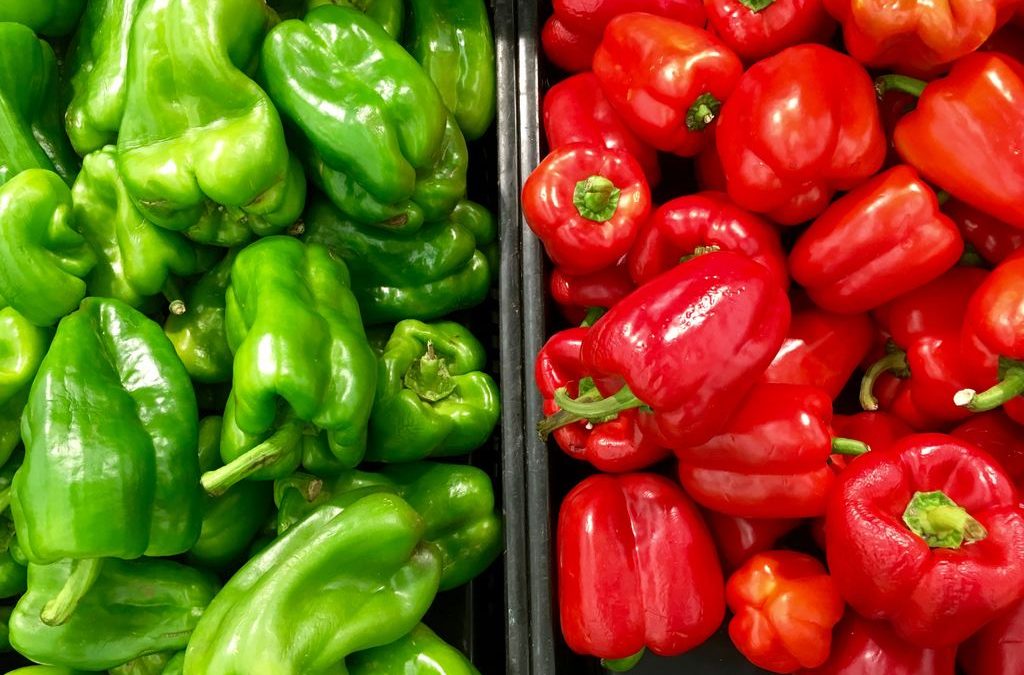If there is an ingredient that can be described as speaking all the culinary languages of the world, it is definitely pepper. Presently at its peak of maturity, it can be found freshly picked in all shapes and colours at the markets.
It is mostly grown in the continental area of Croatia, but its culinary charm is deeply rooted into traditional recipes of the Adriatic, as well as central Croatia. Fresh peppers can be used raw in various salads, they can be baked with other vegetables and served as a side dish, they can be used in various casseroles, and they are also a perfect fit for cooked meals, such as soups, broths, goulash or perkelt (Pörkölt is a meat stew which originates from Hungary, but is eaten throughout Central Europe and the Balkans). However, they are also a sufficiently attractive ingredient to be prepared with a filling and served as an independent dish.
Thanks to their nutritive as well as culinary value, peppers are also popular on vegetarian menus, because there aren’t that many ingredients that can be prepared in so many different variants and go perfectly with everything else, meat or vegetables.
Even though there are numerous recipes with peppers, they are still interesting enough for new gourmand ideas that we tried to discover. In the family-owned restaurant, called DP Zvečaj, right by Mrežnica river, chef de cuisine Ivana Vukmanić prepares a delicious specialty with chicken, and owner Dalibor Vukmanić reveals the secret combination to us.
- One of our main pepper specialties is the stuffed deboned chicken drumstick and thigh. We bake the Bull’s Horn pepper first and peel the skin off, and then cut it in pieces. Having deboned the chicken, we stuff it with bacon, cheese and pieces of pepper, and then wrap the whole thing into veal peritoneum and put it into the oven. When the meat is done, we serve it as a main course, with optional side dishes – he explains.
Seasonal pepper dishes are particularly beloved and served in Slavonia and we discover recipes for baked, stuffed and breaded peppers at a restaurant called Kod Ruže in Osijek. Restaurant manager Sandrino Pavlinušić takes care of the supply of ingredients, and for this particular recipe, a domestic variety of pepper is used, known as “Elephant’s Ear”.
- The pepper is baked first, as if we’re making a salad, then the skin is peeled off. We fill it with cheese, capocollo or ham. Such a stuffed pepper is put in flour, eggs and bread crumbs and fried. Most often we serve it as a warm appetizer and it is one of the main autumn specialties – he says.
While we most often refer to the fresh pepper in recipes, the dried and ground pepper is rarely mentioned, even though it is one of the most often used spices in the continental area of Croatia; among other things, it is the main spice that gives kulen sausage its seal of tradition. A special process of drying and grinding pepper was perfected in Baranja region, where the pepper is one of the most important plants. On the menu of Kormoran restaurant, located in the nature park Kopački Rit, it is rare to find fresh peppers, but 300 to 400 kilograms of finely ground pepper is used a year, be it the sweet or the hot kind. We find out when to put pepper into fish stew, goulash or perkelt (Pörkölt is a meat stew which originates from Hungary, but is eaten throughout Central Europe and the Balkans) from Stjepan Gerl.
- When cooking the fish stew, it is important to add pepper as late as possible, in order to let its intense flavour permeate the dish. This is why, when you’re almost done cooking and the stew is slightly boiling, you add the ground pepper, and the rule states to put one to one and a half spoonfuls of ground pepper per kilogram of fish. When cooking čobanac (traditional Croatian meat stew), ground pepper is added while braising the meat, because it serves as a sort of marinade, so make sure you put it onto the meat before you pour in the liquid in which you will continue cooking the meat. In catfish perkelt, ground pepper is used to make broth, and, since catfish is cooked pretty fast, you put it at the very end and cook very briefly. The ground pepper is also used for the preparation of carp on fork, rubbing the fish well with the pepper before cooking it. Apart from serving as marinade, this will also give the carp a nice, crimson colour – Stjepan points out.




Recent Comments